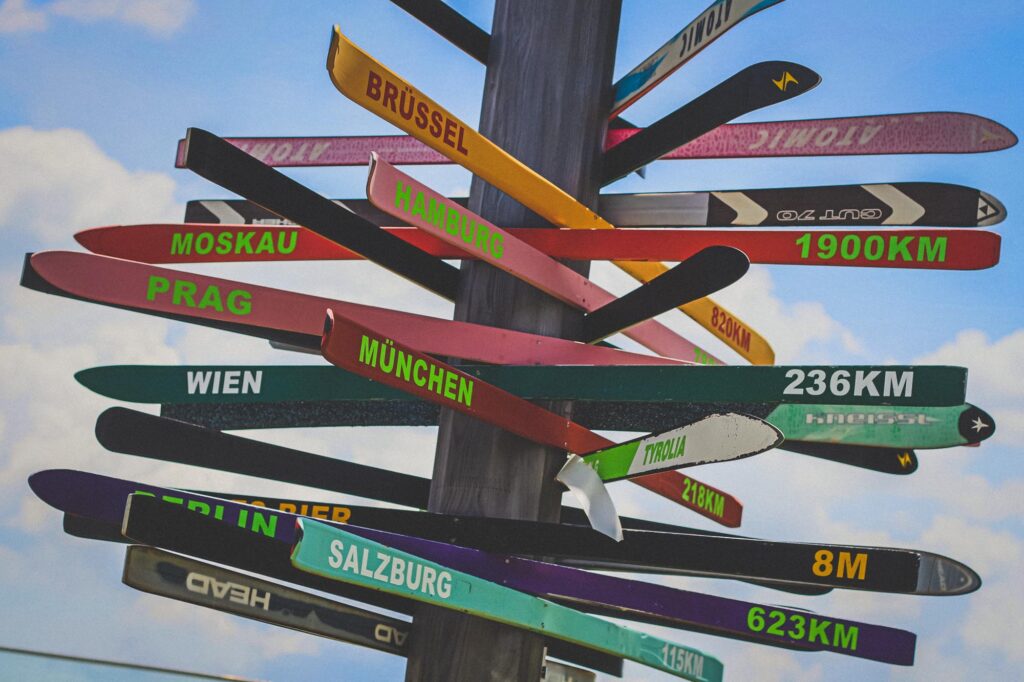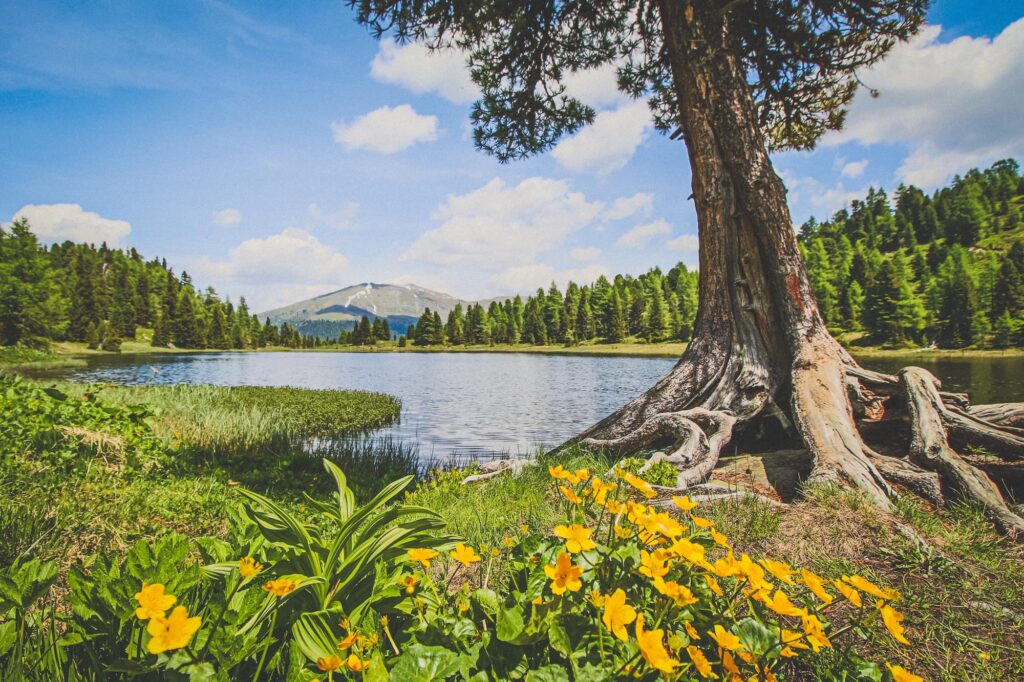On 1 January 1987, the Nockberge mountains were declared the "Nockberge National Park". The 184 square kilometre nature reserve stretches from Innerkrems over the Nockalm Road, the Königstuhl and the Falkert to Bad Kleinkirchheim and on to the Turracher Höhe.
Nockberge National Park - part of the Turrach Nature Experience
Experience nature
Opened on 27 June 1981, the Nockalm Road is a natural mountain road that has been carefully integrated into the Nock landscape and took 12 years to build. Today it is both the most comfortable and most interesting route through the Nockberge National Park. From Reichenau on the southern descent from the Turracher Höhe, the road stretches 34 kilometres through untouched nature to Innerkrems.
Nature idyll Nockberge
The Nockberge mountains are known for their round shapes, grassy up to the peaks and yet up to almost 2,500 metres high. The quiet, the scenic sensations can be wonderfully hiked. Numerous shorter and longer hiking tours lead through this special piece of nature - one of the oldest landscapes in Austria. Cosy huts and inns are a popular part of the Nockberge.
Part of the activities of the Nockberge National Park is to contribute to the protection of the unique mountain world, but at the same time to provide interested visitors with a diverse insight into the beauty and special features of the nature of the Nockberge. The interaction of nature conservation, agriculture and tourism is an important concern of the National Park in order to ensure a harmonious coexistence of nature, landscape and people.


National Park Flora & Fauna
Between 1,000 and 1,600 metres above sea level, the subalpine spruce forest lies like a cloak around the sweeping mountain flanks of the Nockberge. Higher up, the Swiss stone pine, a conifer from the pine family, joins in and forms the rare larch-pine forest. At the timberline, dwarf shrub willows predominate. Here, the much-praised alpine bush thrives alongside bilberries, fogberries and cranberries. During the alpine bush blossoming season in early summer, it colours the alpine pastures bright red. At higher altitudes, alpine grasslands dominate the landscape of the Nockberge. Grazed bristly grass lawns merge into extensive alpine primeval meadows, such as the Krummseggenrasen. These contain a botanical rarity, the true spikenard, a plant whose root is used as a perfume ingredient due to its high content of essential oils.
Animal world full of rarities
In addition to the typical alpine fauna such as chamois, red deer, capercaillie, pine grouse and the marmot, whose warning whistles resound far across the alpine pastures, there are also a number of rarities in the animal world of the Nockberge. During the ice age, the grasshopper species "Miramella alpina carinthiaca" and the moor butterfly "Erebia claudina" were able to survive in the ice-free summit meadows.
After the retreat of the ice, the snow hare and ptarmigan conquered the alpine habitats of the Nockberge. A small, inconspicuous migratory bird that actually lives in the Arctic tundra is the Mornell's plover. It breeds in the Nockberge above the tree line on sparse, lichen-covered, stony ridges. The Mornell's plover is on the Red List of Specially Protected Breeding Birds, as are the Rock Partridge and the King of the Skies, the Golden Eagle.


Splendour of colours & blossoms
The high bluegrass meadows on calcareous subsoil are overwhelmingly colourful. This is where the strongly vanilla-scented cabbage rose, popularly known as "Bluatströpfl", is found. In the summit areas, the cushion sedge meadow is typical. In the small fens around the sedimentation zones of the cirque lakes, woolly grasses lay a white veil over the landscape during the flowering season in summer. The few raised bogs in the area are the habitat of a very rare ice age relict, the dwarf birch.
Contact
Ferien-Appartementhaus Lerchbaumer
Turracher Höhe 90-91a
8864 Turacher Höhe
Vienna Office
Dr. Christian Lerchbaumer
Währingerstrasse 48/37
1090 Vienna
M +43 660 770 880 7
T +43 1 310 4440
E lerchbaumer@turrach-ferienhaus.at
